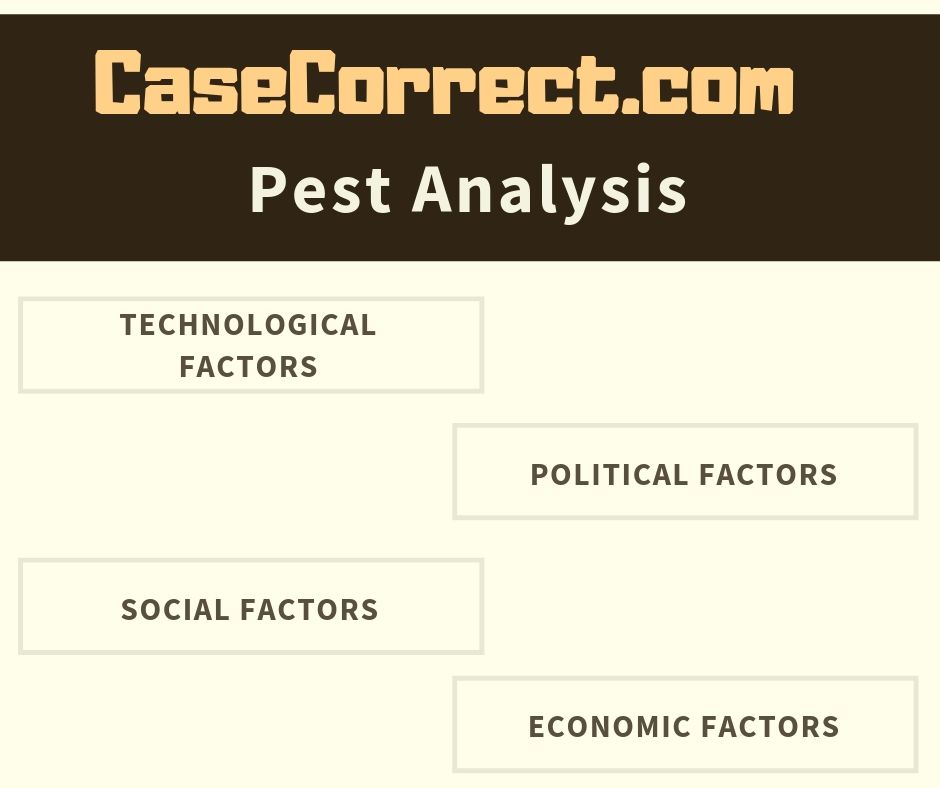Valuation Of Late Stage Companies And Buyouts Case Help
Introduction:
 In 1969, the facility of Valuation Of Late Stage Companies And Buyouts Case Study Solution for providing its member doctors with the benefit of medical and administrative structure. In the properties of United States of America, Valuation Of Late Stage Companies And Buyouts Case Study Solution was among the most reputed organization. It was connected with Cape Cod Eye surgical treatment and Valuation Of Late Stage Companies And Buyouts offering different vertically incorporated services in order to fulfil the requirements of patients. The base operation of Valuation Of Late Stage Companies And Buyouts Case Study Help is localized in downtown Boston. About 160,000 clients were provided services each year with around 7500 surgeries and 4500 laser treatments.
In 1969, the facility of Valuation Of Late Stage Companies And Buyouts Case Study Solution for providing its member doctors with the benefit of medical and administrative structure. In the properties of United States of America, Valuation Of Late Stage Companies And Buyouts Case Study Solution was among the most reputed organization. It was connected with Cape Cod Eye surgical treatment and Valuation Of Late Stage Companies And Buyouts offering different vertically incorporated services in order to fulfil the requirements of patients. The base operation of Valuation Of Late Stage Companies And Buyouts Case Study Help is localized in downtown Boston. About 160,000 clients were provided services each year with around 7500 surgeries and 4500 laser treatments.
Through the aggregation of a series of centralized functions, Valuation Of Late Stage Companies And Buyouts Case Study Solution had actually considerably accomplished the economies of sales enabling the eye doctors to offer them with sufficient time to focus on their patients and their individual lives. The corporate structure was its genuine strength that enabled individuals for developing and directing of practices in their appropriate way. Since 1990, the growth of Valuation Of Late Stage Companies And Buyouts Case Study Help had been steady but the healthcare environment trends had understood to deteriorate the monetary returns of Valuation Of Late Stage Companies And Buyouts Case Study Help from half of the 1980's earnings to 40 percent in 1990 and 30 percent in 2000.
Problem statement:
 Due to the modifications in the guidelines to run in the Valuation Of Late Stage Companies And Buyouts Case Study Analysis market, it was needed by the companies to increase the volume of patients, decrease in costs of treatments and treatments in order to balance out minimized margins. Yearly reduction in the costs had actually produced problem for medical professionals in making a great earnings.
Due to the modifications in the guidelines to run in the Valuation Of Late Stage Companies And Buyouts Case Study Analysis market, it was needed by the companies to increase the volume of patients, decrease in costs of treatments and treatments in order to balance out minimized margins. Yearly reduction in the costs had actually produced problem for medical professionals in making a great earnings.
Situational Analysis:
SWOT Analysis:
Strength:
• Valuation Of Late Stage Companies And Buyouts Case Study Solution is understood to have a prominent position in the Valuation Of Late Stage Companies And Buyouts Case Study Analysis market of United States of America.
• Due to its presence in the United States, it has strong consumer base line as an approximate of160,000 gos to of clients each year.
• Management of Valuation Of Late Stage Companies And Buyouts Case Study Analysis including its doctors spend more time to activities in mentor, research study and development for imaginative item development.
• The employee had a collective relationship in discussing and management of any specific operation headed by a team leader.
Weakness:
 • Problems in upkeep of scheduling system and main scheduling center of Valuation Of Late Stage Companies And Buyouts Case Study Help pace due to the modification in the treatments followed by Shingleton's team.
• Problems in upkeep of scheduling system and main scheduling center of Valuation Of Late Stage Companies And Buyouts Case Study Help pace due to the modification in the treatments followed by Shingleton's team.
• Financial returns of the company had actually been reducing yearly with boost in the development of Valuation Of Late Stage Companies And Buyouts Case Study Help market in United States of America by 5 percent.
• Increased volume of clients' check outs required use of increased capacity that minimized the ability of the group the absorption of the flow of changes.
• Greater patients' volume led the group of severe tension threatening the objective of the practice and the rate of income development.
Opportunities:
• Development of the client base line in the low-end market will supply them with direct contact with their consumers to provide them with high quality services.
• Local players tend to be crucial gamers in the growth of any leading organization, healthy relationship with relative local gamers can provide considerable result in the worth chain of the business operation.
• As there has been reimbursement by the federal government, limiting brand-new entrants entry in the Valuation Of Late Stage Companies And Buyouts Case Study Analysis market in the United States providing an advantage to all leading organizations in the Valuation Of Late Stage Companies And Buyouts Case Study Analysis industry.
• Production of low-end items, as high-end items are pricey and can not be budget friendly for bad people receiving medication for their specific medical condition.
Threats:
• Advancement in using technology versus the protection of ecological issues tend to grow the criticism by the groups of environmental protection.
• With speed to be the leading company in the globe, efforts are being made by every company confusing the consumers and growing concern about their health consciousness.
• Mismanagement of the scheduling process of the company may result in loss of consumers due to the bad services of the team and stress and grumbled doctors.
PEST Analysis:
Political:
 At present, the rate of Valuation Of Late Stage Companies And Buyouts Case Study Analysis industry had actually understood to be increasing at about 34 million with the growing industry rate of about 5 percent. Valuation Of Late Stage Companies And Buyouts Case Study Solution operating in the Valuation Of Late Stage Companies And Buyouts Case Study Analysis market in United States of America has been known to experience political pressure captivating for reduction in the rates of the items.
At present, the rate of Valuation Of Late Stage Companies And Buyouts Case Study Analysis industry had actually understood to be increasing at about 34 million with the growing industry rate of about 5 percent. Valuation Of Late Stage Companies And Buyouts Case Study Solution operating in the Valuation Of Late Stage Companies And Buyouts Case Study Analysis market in United States of America has been known to experience political pressure captivating for reduction in the rates of the items.
Economical:
Economic elements are the most influencing one in the market of health care. Valuation Of Late Stage Companies And Buyouts Case Study Analysis requires adhering to consider laws of consumers, laws of work and laws of health and wellness in the area where it functions. Furthermore, there is a requirement of sticking to added regulations established in the target customer market. In the United States of America, medication requires to be supplied to the patients with respect to the requirements of FDA-- Food and Drug Administration. Regardless of, the benefit of laws and policies to well established company like Valuation Of Late Stage Companies And Buyouts Case Study Solution given that they supply help in minimizing the entry of market and increasing the confidence of customer with drugs. Federal government has likewise carried out containment programs for restriction of repayment. The effect of financial factors is moderate.
Social:
Appropriate factors in social terms include change in culture, aging patterns, health concerns and demographics. Mainly in European and American states, majority of the population is aging increasing the demand of drug usage. This is anticipated to stay very same or even increase with respect to time in upcoming duration. The kits of insurance availability and health care programs presented provides support in drug acquiring. With increase in the visits of the clients in Valuation Of Late Stage Companies And Buyouts Case Study Solution has actually also worked as a consider increasing the demand of drugs. The effect of social factors are thought about favourable.
Technological:
Improvements through the usage of biotechnological methods and methods has assisted in constant innovation for research and advancement with contribution of the organization's own doctor investing their time in the technological improved devices in the Valuation Of Late Stage Companies And Buyouts Case Study Analysis market. The research and development requires heavy financial investment, but it significantly helps with the quality of drugs throughout its development.
Alternatives:
Incorporation of managerial and HR expertise:
 Due to the mismanagement and increased volume of patients check outs affecting the efficiency of doctors and to deal with the reason behind their tension. HR practices in the management of operations of the organization play a crucial role.
Due to the mismanagement and increased volume of patients check outs affecting the efficiency of doctors and to deal with the reason behind their tension. HR practices in the management of operations of the organization play a crucial role.
Pros:
• They have the charge of recruitment providing training of leadership, management of team work, help in scheduling, and an organized procedure of employing.
• They operate in lead in the development management, management of efficiency, succession preparation, courses of profession and some other elements in the management of talent.
• In development of effective relationships at work for efficiency and contribution, they offer help by knowing the crucial gamers.
Experienced in terms of policies, policies and guidelines involving payment that depends on the city, state or area.
Cons:
• Governmental bodies are primarily concerned for financing with the macro-economic concerns rather micro-level concentrating on the contemporary practices of HR concentrating on the performance and inspiration of workforce.
• Development of capability of HR needs financial investment in advancement and training of both HR experts line expert with the responsibilities of personnel management.
Financial investment in enhancing the capacity of specialist personnel evaluates in a variety of ways in order to provide the function of HR management. Even, after the rejection of outsourcing, the internal function of needs to be monitored and examined properly.
Reduction in direct personnel cost:
The method is to be focused within the organization which is mostly due not due to the fact that of the requirement however out of sheer requirement which may undertake reduction in cost. Decrease in cost is generally for enhancement of performance and the portion of earnings growth.
Pros:
• Cost decrease baseline is known to increase the margins of profit which the in-demand benefit. The company can carry out expense reduction procedure based on their requirement to increase the profit margin.
• Increase in the efficiency through reduction in cost by worrying staff members about its entrance in the stage of micro-management.
Enhancement while doing so standards given that the impacts of improvising procedures is on the present procedure nature improving the standards of item development.
Cons:
• Although, the procedure of cost decrease is a favorable one in the advancement and development of the company as a long-lasting technique, however incorrect cutting of the cost may create a panic alarm throughout the organization.
• Changing in the processes followed can in some cases be damaging rather improving rate of earnings development depending on the participation of internal and external stakeholders.
• Concentrating on the reduction of cost may result in jeopardize on the quality of product impacting the objective and vision of the organization and threatening the worth of the brand.
Development of a new organizational structure:
Change in the structure of the company is to control the modifications in organization operations and operate it from a status quo to the wanted state in the future. It intends to bring tactical changes in the organization for a client organization to ensure that the corporation operates normally throughout the change.
Pros:
 • Organizations that considers external expert for application in changing the structure of the organization has the advantage of external influence.
• Organizations that considers external expert for application in changing the structure of the organization has the advantage of external influence.
• Change in the structure of organization forces the management of organization to keep track of the change execution to make sure that the processes required remain in location and quote that there are no barriers hindering successful execution of the modification. The most reliable modification in the structure of organization forces will collect the intelligence of organization in order to much better understand the way the company runs.
Changes in the structure of company control the modification speed and the manner it changes to be performed. It assist the organization in embracing modifications effectively. It also makes sure that the adjustment of the change in the structure of company is going on its right rate and the adjustment of process must be continued.
Cons:
• Change in the structure of organization is not performed straight in a typical manner through leader functioning as the top main members of the organizational management. It can be in some way hard for bringing change in the structure of the organizational force in order to get organization broad buy-in.
• While the group accountable for altering the structure of the company assists the organization to adjust with the implemented modifications, modifications in the organizational structure seldom has the ability of empowerment and to offer ownership of the changes to the employees in the company.
• Changes in the structure of company, is to re-organize the entire structure of the company on how it runs. However, it offers with certainty to run the organization in a smooth way however it ought to not be implemented during urgency.
